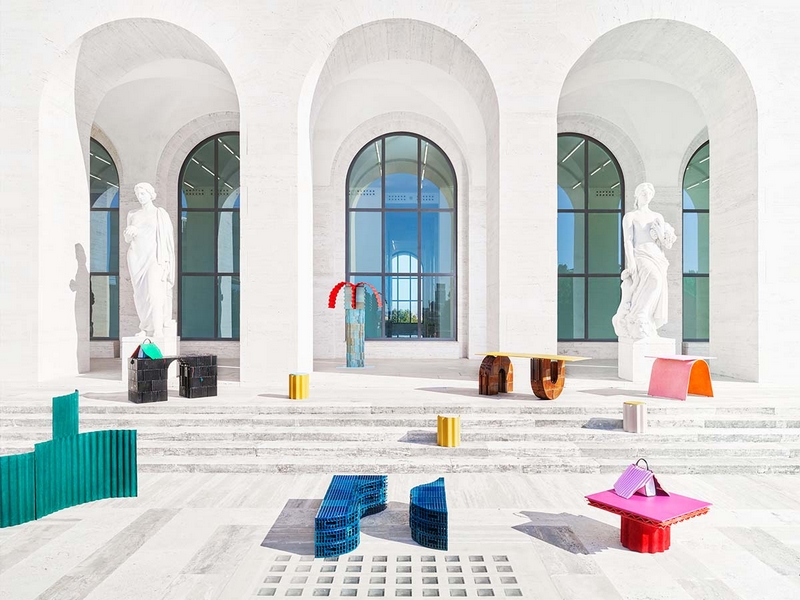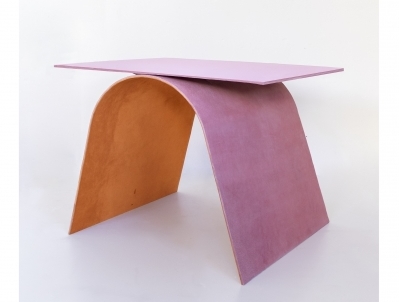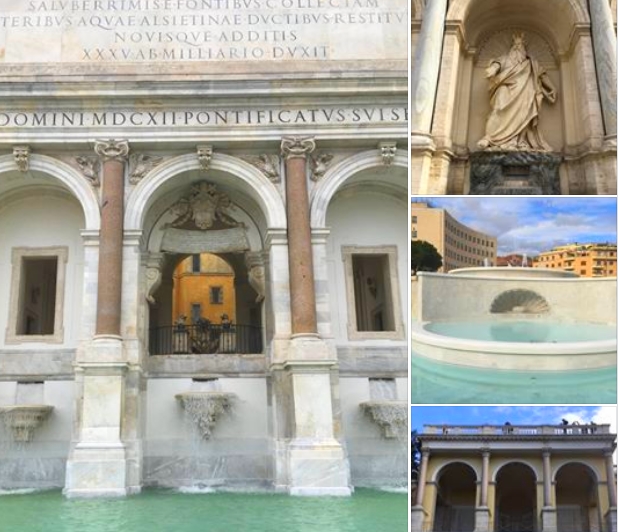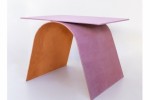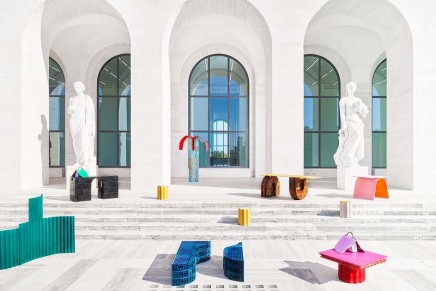design miami/2019: Italian high-end house Fendi presents Roman Molds by Kueng Caputo
FENDI has commissioned the Zurich-based design studio Kueng Caputo (Lovis Caputo and Sarah Kueng) to create ten design pieces intended to decorate the exterior colonnade of its iconic headquarters, the Palazzo della Civiltà Italiana, on the Roman outskirts. This architectural icon serves as the starting point for Kueng Caputo’s exploration of the ways in which the building and Fendi DNA interact. The resulting collection, Roman Molds, captures the tension that has historically informed much of the house’s best output—traditional craft disrupted by innovation.
The collection of ten pieces are meant to be building blocks that in multiplication would create a series of intimate “rooms” for socializing, escaping, and working on the grand loggias of the Palazzo della Civiltà Italiana.
For almost a century Fendi has been committed to redefining luxury through the development of new materials and techniques. From its foundation through Silvia Venturini Fendi’s vision today, the Roman Luxury House has been pushing traditional methodologies and handcraft in new directions. FENDI has always represented the soul of “Made in Italy”: the union of craft, technology, and innovation. The designers have endeavored to make their commission reflect this same approach to originality in materiality and form, researching in the Fendi archives to understand the house’s history of innovation. The Swiss designers were driven by this spirit to find a new expression of FENDI.
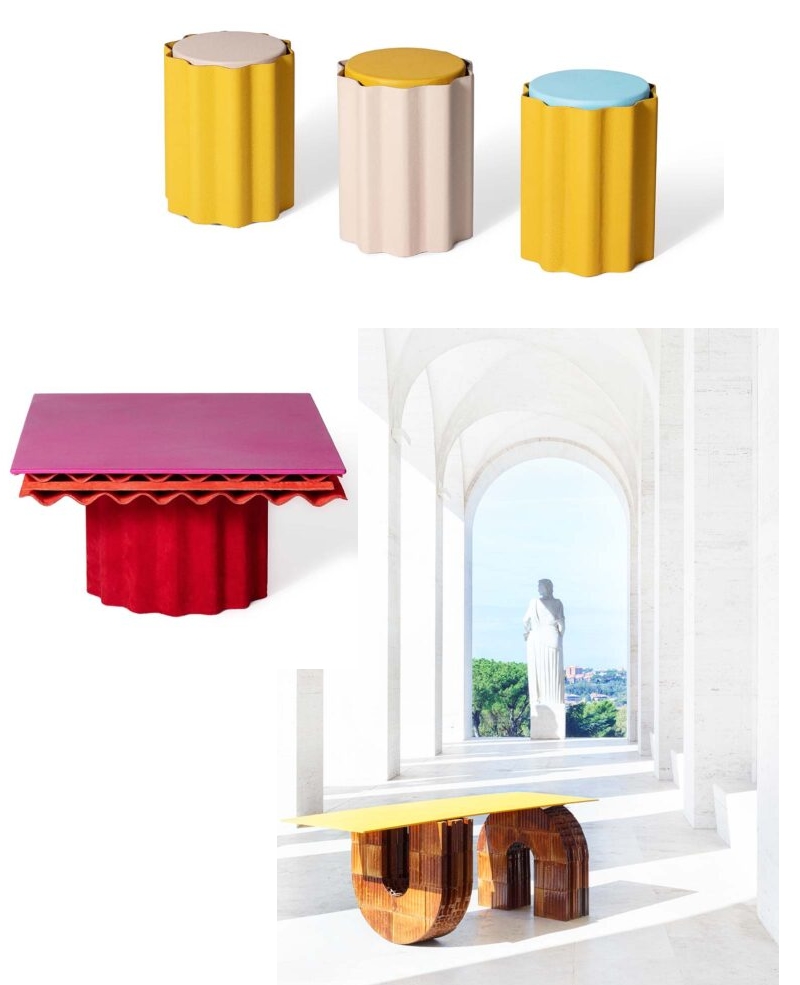
Roman Molds/Kueng Caputo, 2019/ @ FENDI x @Kueng Caputo
Kueng Caputo have combined two of the most divergent materials possible, FENDI’s iconic, supple Selleria Roman leather and the versatile, yet unpretentious terracotta brick. The natural, delicately pebbled surface of the leather has a unique depth of color and feel and inspired the duo to explore its many possibilities. The designers worked to transform the house’s eponymous soft leather into a structural material. Their aim is to push the material to look and feel different than usual expectations of leather by molding and forming it into seemingly weight-bearing materiality. The leather is combined with artisanal bricks that have been carved and shaped in a manner that is more akin to cutting a garment pattern than the traditional techniques used in brick construction.
In this way, Fendi’s new bricks are cut to represent the iconic arches of the Palazzo della Civiltà Italiana in many of the pieces of furniture in the Roman Molds collection. The technically innovative bricks are then further elevated by the application of specially developed ceramic glazes that vibrate intensely alongside the richly hued Selleria leathers, creating blocks of color that further iterate the color blocking tendency that is so ingrained in FENDI DNA.
Design Miami/ runs from Dec 3–8, 2019. The design and art fair will take place for the first time in the recently completed Pride Park, with its entrance now directly facing the entrance to Art Basel Miami Beach.
Four fountains, four important Roman monuments, are given back to the public after extraordinary maintenance thanks to the patronage of the Fendi luxury Maison.
Last week, Fendi announced the re-opening of four fountains in Rome. The fountains of Acqua Paola at the Gianicolo, Mosè in Piazza San Bernardo, Peschiera in Piazzale degli Eroi and the new Acqua Vergine at the Pincio, in Viale Gabriele D’Annunzio, can be admired again.
“We are proud of this renewed collaboration between public and private sectors which enabled, once again, to bring back to their original splendour the Gianicolo, Mosè, Ninfeo del Pincio and Peschiera fountains, which are accessible again to the Romans and to the tourists from the whole world. Rome is an integral part of the Fendi DNA and its artistic and cultural heritage is to be preserved for future generations”, said Serge Brunschwig, President and CEO of Fendi.
The Mayor of Rome, Virginia Raggi, and the President and CEO of the Fendi Maison, Serge Brunschwig, together with Rome’s Superintendent of Cultural Heritage, Maria Vittoria Marini Clarelli, inaugurated the conclusion of the works and the reopening to the public of the four fountains.

